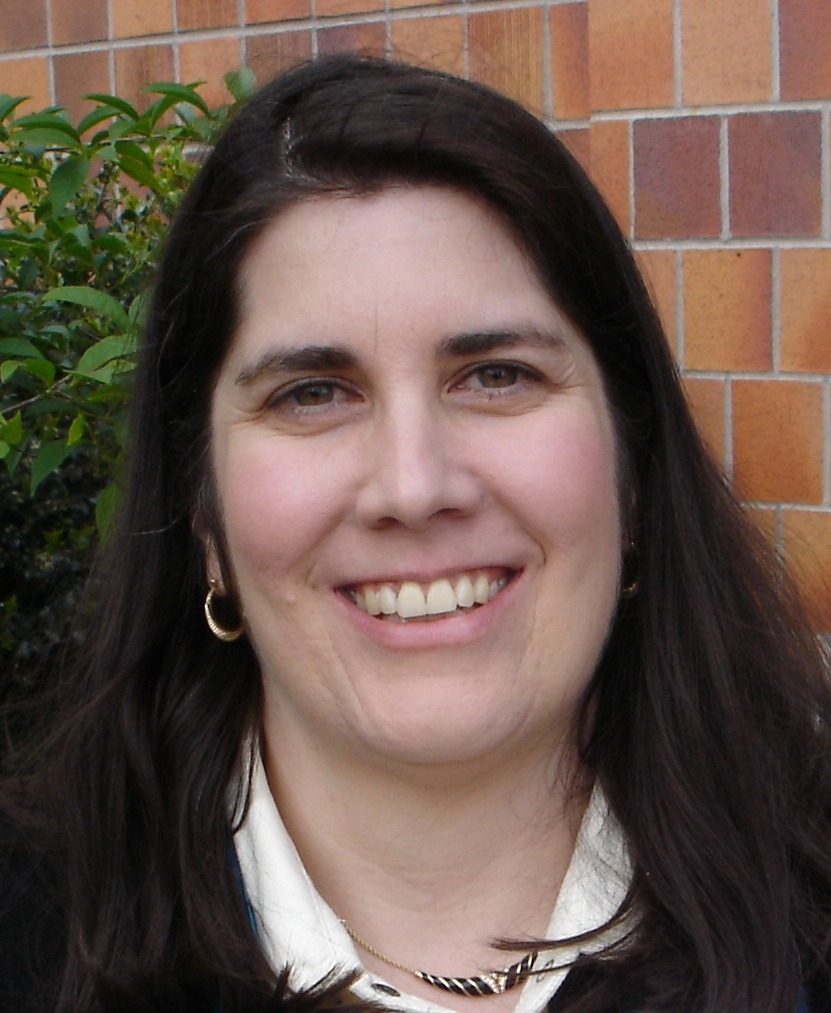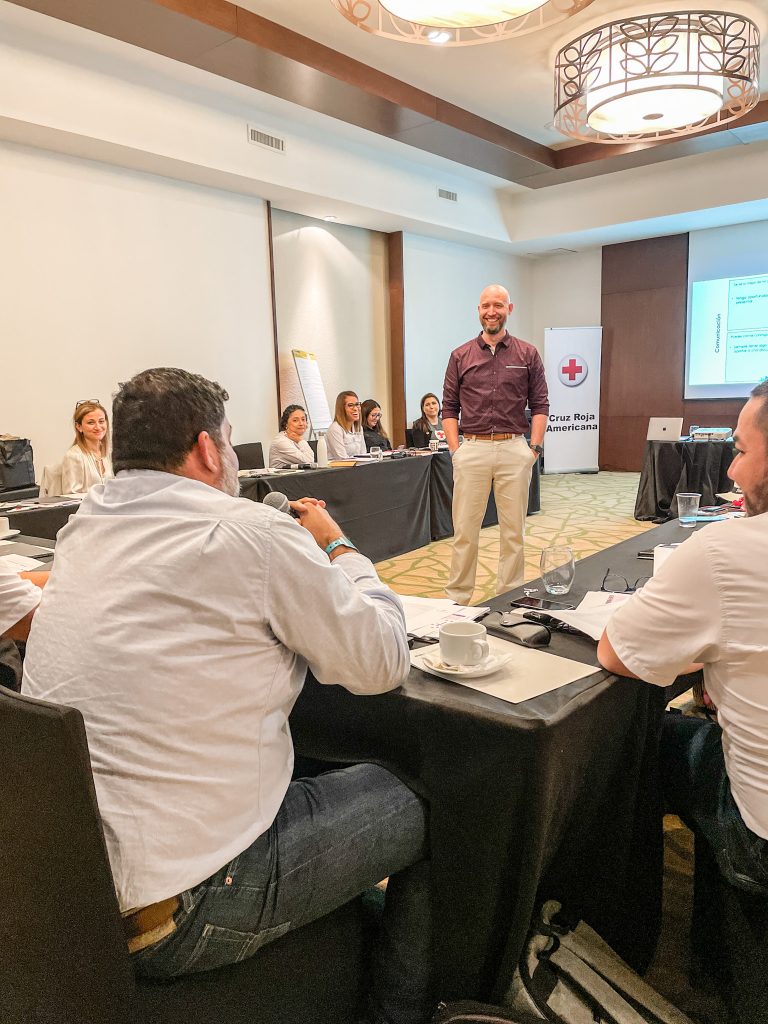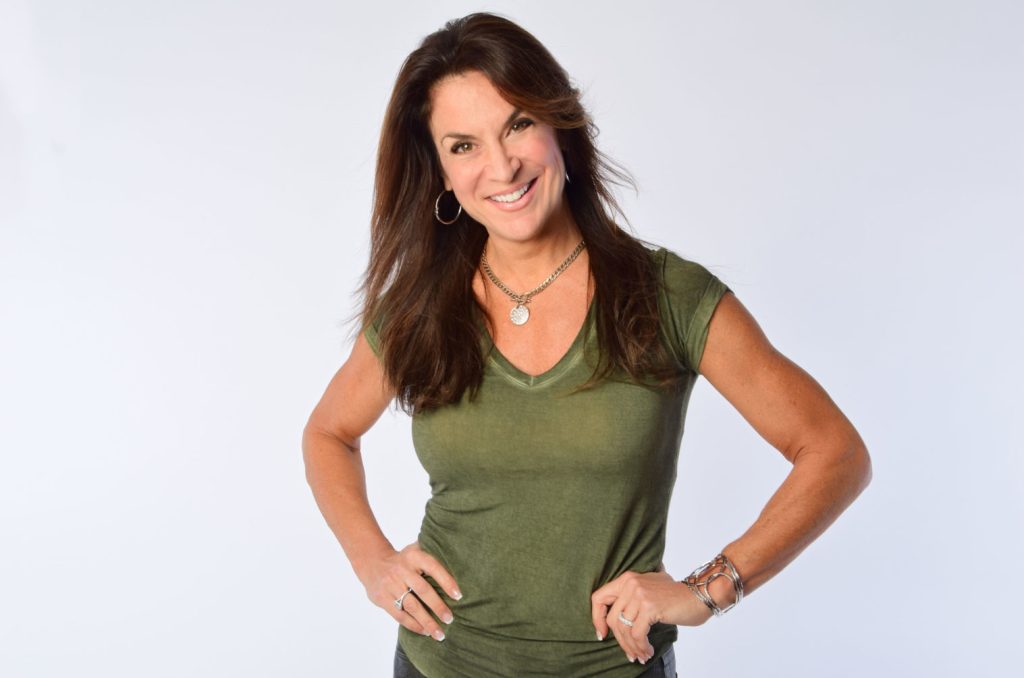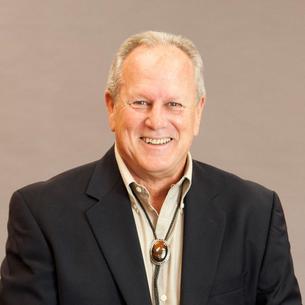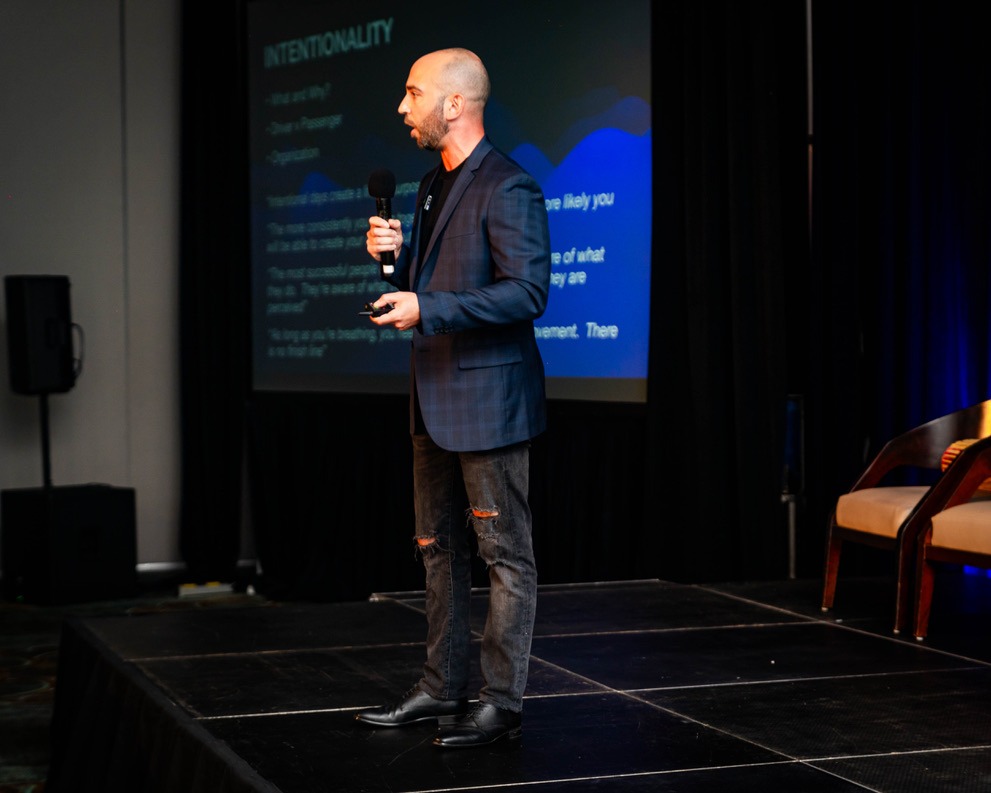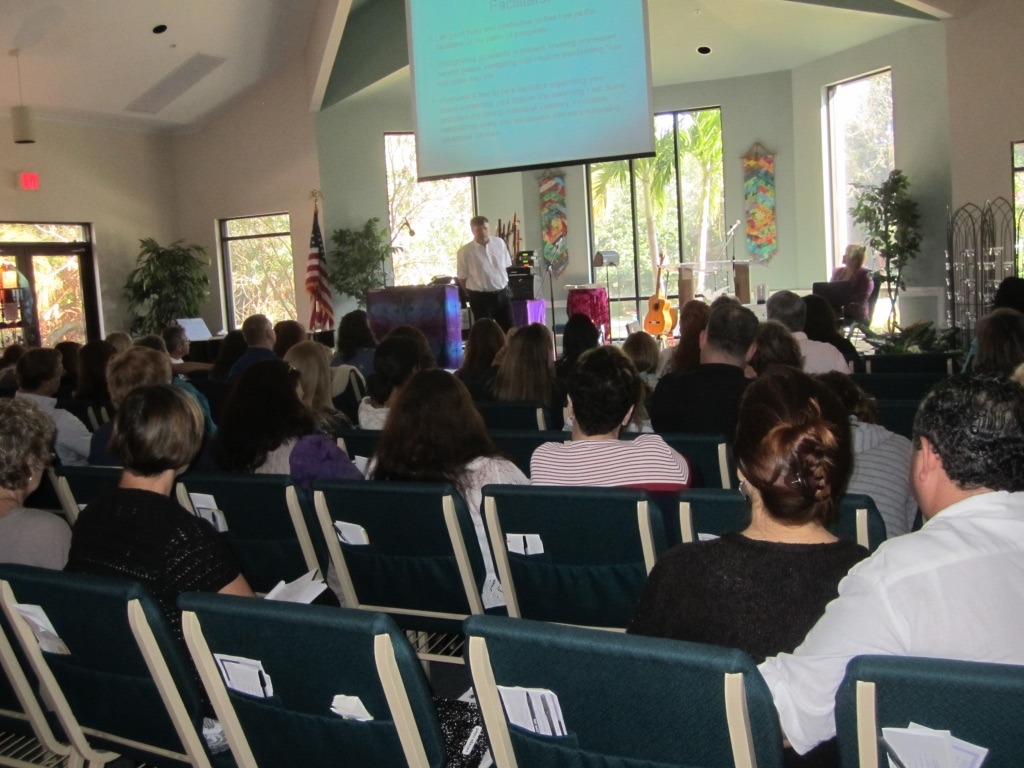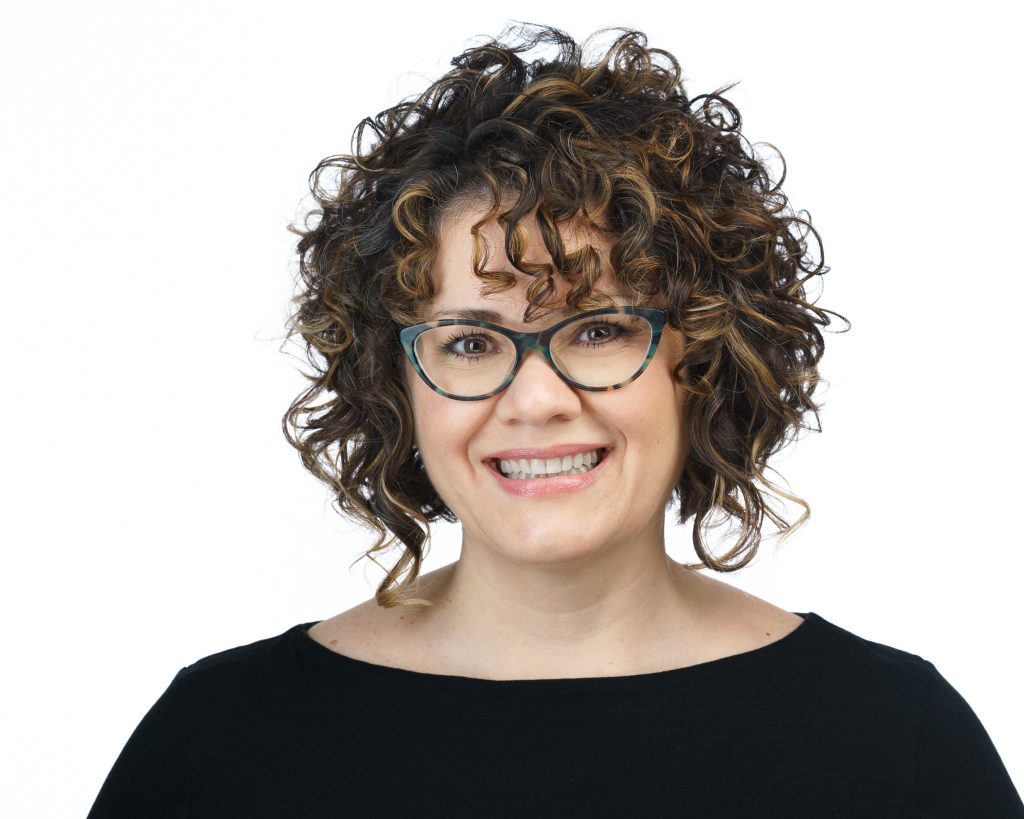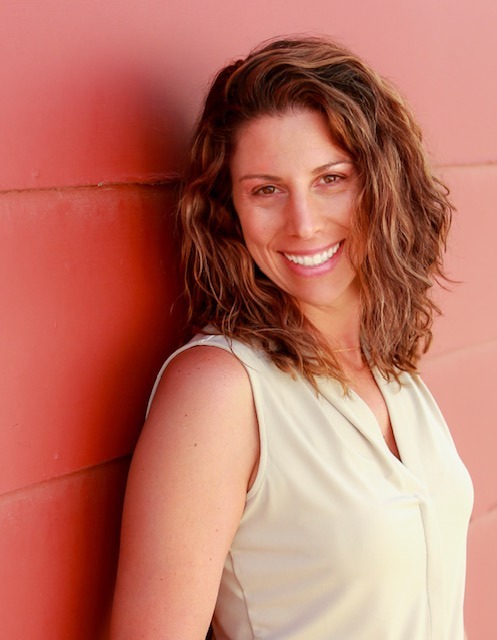

CANCELLED…Amanda McKoy Flanagan, LMSW…CANCELLED
cancelled
Through deliberate and vulnerable engagement with the audience, guests will leave feeling invigorated and inspired with a renewed sense of purpose.
Speaker Information
First Name
Amanda
Last Name
McKoy Flanagan
City
Castle Rock
State
CO
Country
USA
Zip/Post Code
80104
Speaker Details
Describe the work that you do.
I am an author, podcaster, blogger, and motivational speaker. My mission is to help people recognize their limiting belief systems surrounding love and life, created by generational family dysfunction, and to break the chains that keep them small and stuck in fear, specifically fear of loss. By addressing grief, trauma, and pain, I teach people to become comfortable in all of their emotions so they can experience the freedom of living fully and abundantly, with an open heart and open mind. This healing work sets the stage for deep and meaningful connection with others. The overarching theme of my work is healing personal pain has the power to heal the world. Through bridging people back to their true selves, which is love, I believe they will be inspired to love others, as experienced as connection.
Who do you serve/who is your preferred audience?
Woman, ages 35-55 who have experienced loss and/or trauma.
How do you transform your audience?
First, I tell the story of my personal experience with traumatic grief and the affect it had on my relationships, especially on my marriage. Then I explain how my greatest pain brought me to my greatest healing. I use honest and vulnerable storytelling to set up a safe space and build trust. I provide a courageous example of what it looks like to venture into deep feeling and emotion and then I challenge the audience to venture into their deep feelings and emotions. I show guests what it looks like to turn pain into power (to heal their energy) with the intention of inspiring others to do the same.
I ask questions about guest's own experiences which require more than a yes/no answer to get good engagement. I provide opportunity to bridge connection with themselves through a self-worth and self-love exercise. Then I provide opportunity to bridge connection with their neighbor through a similar exercise. I use a modified affirmation exercise where guests will learn they do not need to put a word after "I am" because "I am" is enough. I encourage people to connect with something greater than themselves (this is a spiritual exercise, not religious) to feel what unconditional love from a greater source feels like. Once people know they are loved by the universe--all the time, no matter what--they may begin to feel a sense of belonging and to love themselves.
This is an example of how I explore the five principles listed on my one-sheet: self-love, humility, healing childhood wounds, the Buddhist concept of impermanence, and Compassion Forgiveness. In essence, I apply these principles in a way that touches people's hearts, minds, and souls. with the intention of healing their energy and transforming their life experience. I use pragmatic yet soulful language to engage all aspects of one's being to fully embrace and understand the concepts presented. I don't talk TO the audience, I talk WITH the audience and then I teach them how to reframe old narratives so they can begin to speak to themselves in a more loving, gentle, and compassionate way. The hope is that they will leave with transformed and this experience will organically help to transform the world.
I ask questions about guest's own experiences which require more than a yes/no answer to get good engagement. I provide opportunity to bridge connection with themselves through a self-worth and self-love exercise. Then I provide opportunity to bridge connection with their neighbor through a similar exercise. I use a modified affirmation exercise where guests will learn they do not need to put a word after "I am" because "I am" is enough. I encourage people to connect with something greater than themselves (this is a spiritual exercise, not religious) to feel what unconditional love from a greater source feels like. Once people know they are loved by the universe--all the time, no matter what--they may begin to feel a sense of belonging and to love themselves.
This is an example of how I explore the five principles listed on my one-sheet: self-love, humility, healing childhood wounds, the Buddhist concept of impermanence, and Compassion Forgiveness. In essence, I apply these principles in a way that touches people's hearts, minds, and souls. with the intention of healing their energy and transforming their life experience. I use pragmatic yet soulful language to engage all aspects of one's being to fully embrace and understand the concepts presented. I don't talk TO the audience, I talk WITH the audience and then I teach them how to reframe old narratives so they can begin to speak to themselves in a more loving, gentle, and compassionate way. The hope is that they will leave with transformed and this experience will organically help to transform the world.
Presentation #1 Details
5 Principles to Face Your Pain and Change the World
2.5 hours
Introduction (5 minutes)
Face your pain (trauma, grief, childhood wounds) with courage, grace, and compassion. Embrace every emotion so you can trust yourself to not self-abandon when the going gets tough. Fear of future pain, loss, or grief subsides when we know we can trust ourselves to show up for ourselves. This experience provides emotional freedom to be all in with yourself no matter what pain or joy awaits you, and this naturally leads to emotional security in relationships.
Emotionally secure, we are free to be all in with ourselves and others. Other people and relationships complement our unshakable foundation of self-worth instead of them defining us or providing our value. Empowered by the embodiment of self-love, we are free to live to our greatest potential, purpose, and higher calling. The more people living in their higher purpose, the faster we will bring healing to the world.
Healing our personal pain (our energy) holds the power to heal the collective. This work is crucial as we are at a pivotal crossroad in humanity. Finding, honoring, and loving our true selves (love), will help us to feel safe bridging connection with others.
About me (10 minutes)
My story. My experience with traumatic loss, painful childhood experiences and how I use my pain as fuel to heal and find my purpose.
Principle 1
(25 minutes)
Self-Love
• Remember your spirit self (love and light)
• Discover your natural abilities:
o What comes naturally?
o What are you passionate about?
o Use your natural skills for your individual divine purpose during this incarnation.
• Connection to something greater:
o What do you believe in?
o Create a personal relationship with this force.
o When you feel you truly belong to something greater than you, you automatically feel a sense of self-love, self-worth, and empowerment.
• Our problems, pain, issues, are a direct result of our self-worth. Our outward experience is a reflection of how we think about ourselves. Therefore, we must feel self-love and build up self-worth.
• Self-love underpins every other principle we will explore so keep it in the front of your mind as we continue.
Exercise
• “I Am” affirmation: Write down 5 attributes (things that you like about yourself). For each one, say “I am ____.” Now, envision the vast universe and feel your spiritual connection to it. Then, remove the word and say just “I am” as you picture yourself completely immersed in this vast space and believe that you belong there, that you have a vital part to play in the trajectory of the planet. Settle into the comfort that comes as you allow yourself to be a part of something meaningful and important.
5-Minute Meditation: Feel deeply into each of your “I Am” words. Know completely that you are those words. Now remove those words and just think “I Am.” Feel what it feels like to encompass all those words without the need to convince or persuade yourself.
Sharing: 1 audience member shares their experience with the topic, exercise and/or meditation.
Principle 2
(25 minutes)
Humility
• Every person we encounter has something to teach us.
• Emotional selfishness v. emotional selflessness
• Become a worker amongst workers.
o Do your needs always have to be met or else you feel unvalued or unworthy?
o Pure giving: Do you find joy in giving or are you giving just to receive?
• Do you feel like you always need to voice your opinion, or you won’t matter?
• Understand that other people’s actions are not about you.
• Put your needs aside momentarily for the good of the relationship or situation.
o We don’t do what is good for us, or for them, we do what’s best for the relationship.
o The more we give, the more we receive.
o Trust the process: Practice patience as we watch this process play out.
• Giving other people grace for their behaviors even if we don’t understand them.
Exercise
• Write down a person’s name who you have a hard time being in relationship with. Write 3 bullet points about why it’s hard. Now consider what is going on in this person’s life that might make them act this way. Can you give them grace? Do you believe their actions are about you or how they feel about themselves? Can you give them love even if you feel they don’t “deserve” it?
5-Minute Meditation: Picture the person as an innocent child, alone, playing a game. Walk up to them, smile at them, and ask them if you can play the game with them. Play for a while. As you do, give them the love they needed and most likely did not get.
Sharing: 1 audience member shares their experience with the topic, exercise and/or meditation.
Principle 3
(25 minutes)
Healing Childhood Wounds
• Address limiting belief systems.
o What stories are you carrying with you about your self-worth? About love and life in general.
o “What if that’s not true?”
• Inner child work
o Your inner child wound is responsible for your pain today; how you see your inner child is how you see the world and how you see the world creates your reality.
o We must learn to respect and love our inner child.
• Meditation
o Benefits of meditation
o Types of meditation; contemplative, guided, listening to sounds, total silence.
o Making meditation a priority; discipline to meditate even when you don’t want to
o How to open chakras
o My original prayer to open up and listen to Spirit/Higher Self
• Journaling
o The freedom of knowing you can get your feelings out and no one will see it.
o Total honesty with yourself; allowing yourself the space to witness and explore everything you feel.
o Self-compassion
o Importance of not judging yourself
o What happens for me when I journal; start with fear-based thought and my Higher Self shows up to show me the truth about the situation and about myself and why I am disturbed.
o Finish writing by considering what you need to heal.
Exercise:
• Think about your childhood. Write down 3 memorable experiences that told you a false story about your self-worth, value, and importance. Write a short letter to your inner child from the perspective of his/her/their protector and tell him/her/they the truth about how much she is loved and cared for.
5-Minute Meditation: Create a safe space to silently read your letter to your inner child as you hold hands, or he/she/they sit on your lap. Give them the love they deserved and was required to become an emotionally and mentally healthy adult. Tell them they are safe, loved, seen, and heard.
Sharing: 1 audience member shares their experience with the topic, exercise and/or meditation.
10-MINUTE BREAK
Principle 4
(25 minutes)
Impermanence
• The Buddhist concept that nothing is forever except our soul.
• The most important work we will do is developing our soul into the most enlightened spirit possible.
• Emotional self-protection
o Past traumatic loss, grief, and a broken heart can influence us (sometimes unconsciously) to keep emotional distance in an effort to protect us from future pain.
• Are you a Pain Prepper?
o Are you preparing yourself for loss before loss is an option?
• Good Griever concept
o Embrace people, places, and situations, and letting them go with compassion, love, and understanding. Welcome them in and send them back out to the loving energetic field without resistance and with ease.
• Vulnerability & emotional intimacy
Exercise:
• Get honest with yourself about your emotional distance (protection) in your close relationships. List the 3 people who are closest to you in your life. Write a sentence for each person about your level of vulnerability with each. If you are keeping distance, create a mantra to help you feel safe.
5-Minute Meditation: Select the closest person to you in your life. Envision yourself in an emotionally intimate situation with that person. What does that feel like? If there is anxiety or fear present, transmute that energy into love. Practice the Good Griever concept. Bring them into your heart and release them to the universe. Do this 3 times.
Sharing
Principle 5
(25 minutes)
Compassion Forgiveness
• What is emotional freedom?: Your emotions, feelings, pain, grief, and struggle do not define you. You can acknowledge your wounds, but they do not dictate your behavior, identity, or how you feel about yourself.
• Forgiveness is not necessary for healing, but it holds the power to release all the negative energy you are holding so you can experience even more emotional freedom.
• Belief that most people are doing the best they can.
• What is Compassion Forgiveness?: Accepting (for your own freedom, not theirs) a person's inability to do better based on their own unhealed painful life experience and trauma.
• Remove yourself as the reason for their hurtful actions with help you to build self-love and self-worth.
• Humility plays a major part: You can trust in your goodness and remove yourself as the reason for their behavior when you understand their poor behavior speaks nothing about you and volumes about them. They are mostly thinking about themselves.
• Adversaries are only perceived as we are all one; Holding a grudge or a resentment only hurts you because that negative energy inhibits you from growing into the highest version of yourself.
Exercise:
• Pull up that long-standing grudge that you just can’t let go of. Who causes you the greatest affliction due to your perception of what someone did to you? (You can use the same person as the last exercise if he/she/they apply to this one.) Put yourself in their shoes. Write a brief paragraph about their life and what may cause them to act the way they do. Now write 1-2 sentences reframing the reason why they hurt you.
5-Minute Meditation: Imagine yourself holding a bunch of balloons. The person you just wrote about is those balloons. Feel yourself holding tight to the balloons as you struggle to keep them on the ground. Think about how it might feel to let them go. Send them love and compassion as you release the balloons. Watch them float all the way up and away until you cannot see them any longer. Sense how much lighter you feel.
Sharing: 1 audience member shares their experience with the topic, exercise and/or meditation.
Wrap Up
• Provide resources and references for exploring these topics deeper.
• Provide links to my book, website, and podcast for additional healing.
• Offer to stay after and talk with anyone who would like to speak with me.
• Provide contact information for future, personal discussions.
2.5 hours
Introduction (5 minutes)
Face your pain (trauma, grief, childhood wounds) with courage, grace, and compassion. Embrace every emotion so you can trust yourself to not self-abandon when the going gets tough. Fear of future pain, loss, or grief subsides when we know we can trust ourselves to show up for ourselves. This experience provides emotional freedom to be all in with yourself no matter what pain or joy awaits you, and this naturally leads to emotional security in relationships.
Emotionally secure, we are free to be all in with ourselves and others. Other people and relationships complement our unshakable foundation of self-worth instead of them defining us or providing our value. Empowered by the embodiment of self-love, we are free to live to our greatest potential, purpose, and higher calling. The more people living in their higher purpose, the faster we will bring healing to the world.
Healing our personal pain (our energy) holds the power to heal the collective. This work is crucial as we are at a pivotal crossroad in humanity. Finding, honoring, and loving our true selves (love), will help us to feel safe bridging connection with others.
About me (10 minutes)
My story. My experience with traumatic loss, painful childhood experiences and how I use my pain as fuel to heal and find my purpose.
Principle 1
(25 minutes)
Self-Love
• Remember your spirit self (love and light)
• Discover your natural abilities:
o What comes naturally?
o What are you passionate about?
o Use your natural skills for your individual divine purpose during this incarnation.
• Connection to something greater:
o What do you believe in?
o Create a personal relationship with this force.
o When you feel you truly belong to something greater than you, you automatically feel a sense of self-love, self-worth, and empowerment.
• Our problems, pain, issues, are a direct result of our self-worth. Our outward experience is a reflection of how we think about ourselves. Therefore, we must feel self-love and build up self-worth.
• Self-love underpins every other principle we will explore so keep it in the front of your mind as we continue.
Exercise
• “I Am” affirmation: Write down 5 attributes (things that you like about yourself). For each one, say “I am ____.” Now, envision the vast universe and feel your spiritual connection to it. Then, remove the word and say just “I am” as you picture yourself completely immersed in this vast space and believe that you belong there, that you have a vital part to play in the trajectory of the planet. Settle into the comfort that comes as you allow yourself to be a part of something meaningful and important.
5-Minute Meditation: Feel deeply into each of your “I Am” words. Know completely that you are those words. Now remove those words and just think “I Am.” Feel what it feels like to encompass all those words without the need to convince or persuade yourself.
Sharing: 1 audience member shares their experience with the topic, exercise and/or meditation.
Principle 2
(25 minutes)
Humility
• Every person we encounter has something to teach us.
• Emotional selfishness v. emotional selflessness
• Become a worker amongst workers.
o Do your needs always have to be met or else you feel unvalued or unworthy?
o Pure giving: Do you find joy in giving or are you giving just to receive?
• Do you feel like you always need to voice your opinion, or you won’t matter?
• Understand that other people’s actions are not about you.
• Put your needs aside momentarily for the good of the relationship or situation.
o We don’t do what is good for us, or for them, we do what’s best for the relationship.
o The more we give, the more we receive.
o Trust the process: Practice patience as we watch this process play out.
• Giving other people grace for their behaviors even if we don’t understand them.
Exercise
• Write down a person’s name who you have a hard time being in relationship with. Write 3 bullet points about why it’s hard. Now consider what is going on in this person’s life that might make them act this way. Can you give them grace? Do you believe their actions are about you or how they feel about themselves? Can you give them love even if you feel they don’t “deserve” it?
5-Minute Meditation: Picture the person as an innocent child, alone, playing a game. Walk up to them, smile at them, and ask them if you can play the game with them. Play for a while. As you do, give them the love they needed and most likely did not get.
Sharing: 1 audience member shares their experience with the topic, exercise and/or meditation.
Principle 3
(25 minutes)
Healing Childhood Wounds
• Address limiting belief systems.
o What stories are you carrying with you about your self-worth? About love and life in general.
o “What if that’s not true?”
• Inner child work
o Your inner child wound is responsible for your pain today; how you see your inner child is how you see the world and how you see the world creates your reality.
o We must learn to respect and love our inner child.
• Meditation
o Benefits of meditation
o Types of meditation; contemplative, guided, listening to sounds, total silence.
o Making meditation a priority; discipline to meditate even when you don’t want to
o How to open chakras
o My original prayer to open up and listen to Spirit/Higher Self
• Journaling
o The freedom of knowing you can get your feelings out and no one will see it.
o Total honesty with yourself; allowing yourself the space to witness and explore everything you feel.
o Self-compassion
o Importance of not judging yourself
o What happens for me when I journal; start with fear-based thought and my Higher Self shows up to show me the truth about the situation and about myself and why I am disturbed.
o Finish writing by considering what you need to heal.
Exercise:
• Think about your childhood. Write down 3 memorable experiences that told you a false story about your self-worth, value, and importance. Write a short letter to your inner child from the perspective of his/her/their protector and tell him/her/they the truth about how much she is loved and cared for.
5-Minute Meditation: Create a safe space to silently read your letter to your inner child as you hold hands, or he/she/they sit on your lap. Give them the love they deserved and was required to become an emotionally and mentally healthy adult. Tell them they are safe, loved, seen, and heard.
Sharing: 1 audience member shares their experience with the topic, exercise and/or meditation.
10-MINUTE BREAK
Principle 4
(25 minutes)
Impermanence
• The Buddhist concept that nothing is forever except our soul.
• The most important work we will do is developing our soul into the most enlightened spirit possible.
• Emotional self-protection
o Past traumatic loss, grief, and a broken heart can influence us (sometimes unconsciously) to keep emotional distance in an effort to protect us from future pain.
• Are you a Pain Prepper?
o Are you preparing yourself for loss before loss is an option?
• Good Griever concept
o Embrace people, places, and situations, and letting them go with compassion, love, and understanding. Welcome them in and send them back out to the loving energetic field without resistance and with ease.
• Vulnerability & emotional intimacy
Exercise:
• Get honest with yourself about your emotional distance (protection) in your close relationships. List the 3 people who are closest to you in your life. Write a sentence for each person about your level of vulnerability with each. If you are keeping distance, create a mantra to help you feel safe.
5-Minute Meditation: Select the closest person to you in your life. Envision yourself in an emotionally intimate situation with that person. What does that feel like? If there is anxiety or fear present, transmute that energy into love. Practice the Good Griever concept. Bring them into your heart and release them to the universe. Do this 3 times.
Sharing
Principle 5
(25 minutes)
Compassion Forgiveness
• What is emotional freedom?: Your emotions, feelings, pain, grief, and struggle do not define you. You can acknowledge your wounds, but they do not dictate your behavior, identity, or how you feel about yourself.
• Forgiveness is not necessary for healing, but it holds the power to release all the negative energy you are holding so you can experience even more emotional freedom.
• Belief that most people are doing the best they can.
• What is Compassion Forgiveness?: Accepting (for your own freedom, not theirs) a person's inability to do better based on their own unhealed painful life experience and trauma.
• Remove yourself as the reason for their hurtful actions with help you to build self-love and self-worth.
• Humility plays a major part: You can trust in your goodness and remove yourself as the reason for their behavior when you understand their poor behavior speaks nothing about you and volumes about them. They are mostly thinking about themselves.
• Adversaries are only perceived as we are all one; Holding a grudge or a resentment only hurts you because that negative energy inhibits you from growing into the highest version of yourself.
Exercise:
• Pull up that long-standing grudge that you just can’t let go of. Who causes you the greatest affliction due to your perception of what someone did to you? (You can use the same person as the last exercise if he/she/they apply to this one.) Put yourself in their shoes. Write a brief paragraph about their life and what may cause them to act the way they do. Now write 1-2 sentences reframing the reason why they hurt you.
5-Minute Meditation: Imagine yourself holding a bunch of balloons. The person you just wrote about is those balloons. Feel yourself holding tight to the balloons as you struggle to keep them on the ground. Think about how it might feel to let them go. Send them love and compassion as you release the balloons. Watch them float all the way up and away until you cannot see them any longer. Sense how much lighter you feel.
Sharing: 1 audience member shares their experience with the topic, exercise and/or meditation.
Wrap Up
• Provide resources and references for exploring these topics deeper.
• Provide links to my book, website, and podcast for additional healing.
• Offer to stay after and talk with anyone who would like to speak with me.
• Provide contact information for future, personal discussions.
Presentation #2 Details
Transform Your Relationships By Healing Your Grief
2 hours
Introduction (5 minutes)
Grief cracks us wide open, other pain and past losses come up and need to come out. Relationship issues surface. Sometimes we feel a pull to make ourselves better and the need for change. I will show you how to greet the nudge inside, to meet yourself (your emotions) fully and wholly and to learn to love yourself and others as well as let go of them peacefully, if desired.
Main focus:
Pain/grief/trauma has the power to distance us from those we love and from ourselves in an effort to protect ourselves from future pain. (Aka emotional self-protection.) I will guide you home to your true self by showing you how to be all in with all of your emotions so you can be all in on the relationships you choose to be in.
Outcomes:
• An unshakeable connection to self, others, and the universe
• Comfort in all of your emotions--grief, fear, joy, love.
• Your relationship with yourself will become loving.
• Your relationships with others will become healthier.
• You will learn how to gracefully let go of unhealthy relationships.
• You will experience emotional freedom: trusting yourself to show up for yourself no matter what.
• You will heal your wounds so you can experience a shift in energy, which will echo out into the world and help heal the collective.
About Me (10 minutes)
My story with traumatic loss and painful childhood experiences and how I use my pain as fuel to heal and find my purpose.
Module 1
(20 minutes)
“Yesterday I was clever, so I wanted to change the world. Today, I am wise so I am changing myself.”-Rumi
Grief & All Its Forms
a) Types of Grief
• Ambiguous (grief over someone who is still alive)/secondary losses
• Change is the biggest type of loss.
• Generational dysfunction: coping mechanisms have served a purpose then but not today and are causing issues.
• Understanding how grief changes us and the people around us.
• Grief has the power to shut us off from emotions because they are too painful to feel.
• Emotional self-protection creates misunderstanding and tension in relationships.
b) Specific Ways Grief Shows Up In Relationships
• Can be positive or negative; has the power to bring us closer to some people and push us further from others.
• We can isolate from others because we feel people are tired of hearing our story or because we are depressed.
• People who you thought would be supportive are not and others who you never thought would show up for you do. (Tell story about Shelly and Shannon. “Strangers can become best friends just as easy as best friends become strangers.”)
• Socially: roles and labels change as the result of losing a loved one; you are different now, and you may feel like you don’t fit in anymore with a certain group
• Some people have a spiritual experience or awakening after huge emotional upheaval (can occur from loss of anything, not just a person, or any change, positive or negative) and this experience naturally places us on a different wavelength/frequency, which can create even more loss. (Example of ambiguous loss)
c) Let It Begin With You
• Are you willing to be the one to reach out and bring comfort to your relationships?
• Do you want to maintain difficult relationships? You get to decide if you want certain people in your life or not.
• The Place of Oneness
Sharing: Audience will be encouraged to share a personal story. (How many people will share depends on time.)
10-Minute Meditation (Start with brief explanation of how to meditate)
Reimagine Your Relationship: What do you want your troubling relationships to look like? Imagine yourself in peaceful conversations and interactions.
5-MINUTE BREAK
Module 2
(20 minutes)
“…grant that I may not so much seek to be consoled as to console, to be understood as to understand, to be loved as to love.”- From the prayer attributed to St. Francis of Assisi
How to Navigate Relationships Affected by Grief
a) Compassion Forgiveness
• What is compassion forgiveness? Believing people are doing the best they can based on their own life experience, pain/trauma.
• People say things that are usually well-intentioned but actually hurt; how do we forgive them?
• Love is the answer; thinking about others and how they feel; they are uncomfortable with grief and want to make you feel better, so it goes away
• Humility main component
• Resentment: negative energy creates negative outer experience and collective pain
• Emotional selflessness
b) Esteemable Boundaries
• Living with emotional integrity
• Your True Home
• What are esteemable boundaries? Using difficult relationships to grow your love and compassion. Walking about from challenges is self-abandoning. (Does not refer to abuse)
• When completely secure, relationships won’t be difficult because you won’t need someone to fill your void. You will feel less disappointment.
• Create a new story with the 3 C’s: Consistency, Courage, and Compassion
Sharing
10-Minute Meditation
Metta Meditation: Imagine yourself in a circle around the globe, holding hands with the whole world, especially those you perceive as adversaries (or at least invite them into the circle). Send love and peace to all and watch it come back to you.
5-MINUTE BREAK
Module 3
(20 minutes)
“And the day came when the risk to remain tight in a bud was more painful than the risk it took to blossom. “-Anais Nin
Your Relationship With Yourself
a) Acknowledge Your Emotions
• Your greatest pain can bring the greatest healing.
• Everything you are feeling is normal.
b) Accept Your Emotions
• Whatever your pain/trauma is, is okay. If you feel pain, it’s there for a reason.
• Non-judgment
• Self-compassion
c) Embrace Your Emotions
• Resilience
• Acceptance prayer
• Your greatest pain can bring the greatest healing.
• Getting honest with your flaws/flawed thinking (Story about the invitation to party I didn’t want to go to)
d) Emotional Intimacy
• Vulnerability is the key.
• What is emotional intimacy and how comfortable are you with it?
• Learning how meet and love yourself so you can feel safe and secure in uncomfortable situations or when they need to be let go.
• Self-sabotage
• Self-worth
• Transmuting flaws into attributes
• Boundless Expansion; let it all in
• Loving all of you
Sharing
10-Minute Meditation
Love Yourself: Picture yourself playing a game with your inner child. Give them all the love they have always deserved. Pick up your child and swing them around and tell them you love them unconditionally. Place them on your lap, hug them, and tell them that they are safe.
5-MINUTE BREAK
Module 4
(20 minutes)
“It is the capacity to feel consuming grief and pain and despair that also allows me to embrace love and joy and beauty with my whole heart. I must let it all in.”-Anna White
Staying Open to Love and the Courage to Let Go
a) Staying Open
• If you want to keep people in your life, you must go in with an open heart.
• Think of the important people in your life. Are you all in with them?
• If fear is present (of feeling deeply or fear of potential future loss) but you want to embrace people and love with an open heart, try this reframing mantra: “It’s dangerous to love, I won’t survive the loss” to “It’s safe to love, I will always be okay.”
• I will give a few minutes for people to write down their own mantras to share with each other.
b) Letting Go
1) Impermanence
• Buddhist principle: if my soul is the only thing that lives on, it makes the most sense to grow it into the most enlightened soul possible, and the most enlightened souls are made of pure love, for self and others regardless of circumstances.
• It’s not the pain that causes the pain, it’s the resistance to the pain that causes the pain.
• Reason impermanence is important in the grieving process is because my unhealthy attachment is what creates the pain.
• We hold on so tightly because more loss seems unbearable.
2) Good Griever
• Allow the flow of all things in and then let them go.
• Learning to be attached but not attached; healthy attachment means you are not dependent on the person to be here to feel whole; you serve your own needs.
• Tools for embracing and letting go:
o Put yourself in the situation you are most afraid of. Write down how you will respond. Is your true response the same as the one in your head?
o Interval training for emotional intimacy within yourself: 2 steps into the emotion, 1 step back.
o You never have to truly let anyone go: Keep them in your heart but not active in your life.
Sharing
10-Minute Meditation
Good griever: Circle of embracing your emotions and letting them go.
Parting Thoughts (5 minutes)
• Allow yourself to feel everything that has come up for you today.
• Keep talking and sharing your grief and relationship struggles with people you trust.
• Thank you for coming and for sharing your time and stories.
• Reminder that discussion can elicit many emotions, please take good and gentle care/be
safe on the roads
• Offer to be available after the session is over.
2 hours
Introduction (5 minutes)
Grief cracks us wide open, other pain and past losses come up and need to come out. Relationship issues surface. Sometimes we feel a pull to make ourselves better and the need for change. I will show you how to greet the nudge inside, to meet yourself (your emotions) fully and wholly and to learn to love yourself and others as well as let go of them peacefully, if desired.
Main focus:
Pain/grief/trauma has the power to distance us from those we love and from ourselves in an effort to protect ourselves from future pain. (Aka emotional self-protection.) I will guide you home to your true self by showing you how to be all in with all of your emotions so you can be all in on the relationships you choose to be in.
Outcomes:
• An unshakeable connection to self, others, and the universe
• Comfort in all of your emotions--grief, fear, joy, love.
• Your relationship with yourself will become loving.
• Your relationships with others will become healthier.
• You will learn how to gracefully let go of unhealthy relationships.
• You will experience emotional freedom: trusting yourself to show up for yourself no matter what.
• You will heal your wounds so you can experience a shift in energy, which will echo out into the world and help heal the collective.
About Me (10 minutes)
My story with traumatic loss and painful childhood experiences and how I use my pain as fuel to heal and find my purpose.
Module 1
(20 minutes)
“Yesterday I was clever, so I wanted to change the world. Today, I am wise so I am changing myself.”-Rumi
Grief & All Its Forms
a) Types of Grief
• Ambiguous (grief over someone who is still alive)/secondary losses
• Change is the biggest type of loss.
• Generational dysfunction: coping mechanisms have served a purpose then but not today and are causing issues.
• Understanding how grief changes us and the people around us.
• Grief has the power to shut us off from emotions because they are too painful to feel.
• Emotional self-protection creates misunderstanding and tension in relationships.
b) Specific Ways Grief Shows Up In Relationships
• Can be positive or negative; has the power to bring us closer to some people and push us further from others.
• We can isolate from others because we feel people are tired of hearing our story or because we are depressed.
• People who you thought would be supportive are not and others who you never thought would show up for you do. (Tell story about Shelly and Shannon. “Strangers can become best friends just as easy as best friends become strangers.”)
• Socially: roles and labels change as the result of losing a loved one; you are different now, and you may feel like you don’t fit in anymore with a certain group
• Some people have a spiritual experience or awakening after huge emotional upheaval (can occur from loss of anything, not just a person, or any change, positive or negative) and this experience naturally places us on a different wavelength/frequency, which can create even more loss. (Example of ambiguous loss)
c) Let It Begin With You
• Are you willing to be the one to reach out and bring comfort to your relationships?
• Do you want to maintain difficult relationships? You get to decide if you want certain people in your life or not.
• The Place of Oneness
Sharing: Audience will be encouraged to share a personal story. (How many people will share depends on time.)
10-Minute Meditation (Start with brief explanation of how to meditate)
Reimagine Your Relationship: What do you want your troubling relationships to look like? Imagine yourself in peaceful conversations and interactions.
5-MINUTE BREAK
Module 2
(20 minutes)
“…grant that I may not so much seek to be consoled as to console, to be understood as to understand, to be loved as to love.”- From the prayer attributed to St. Francis of Assisi
How to Navigate Relationships Affected by Grief
a) Compassion Forgiveness
• What is compassion forgiveness? Believing people are doing the best they can based on their own life experience, pain/trauma.
• People say things that are usually well-intentioned but actually hurt; how do we forgive them?
• Love is the answer; thinking about others and how they feel; they are uncomfortable with grief and want to make you feel better, so it goes away
• Humility main component
• Resentment: negative energy creates negative outer experience and collective pain
• Emotional selflessness
b) Esteemable Boundaries
• Living with emotional integrity
• Your True Home
• What are esteemable boundaries? Using difficult relationships to grow your love and compassion. Walking about from challenges is self-abandoning. (Does not refer to abuse)
• When completely secure, relationships won’t be difficult because you won’t need someone to fill your void. You will feel less disappointment.
• Create a new story with the 3 C’s: Consistency, Courage, and Compassion
Sharing
10-Minute Meditation
Metta Meditation: Imagine yourself in a circle around the globe, holding hands with the whole world, especially those you perceive as adversaries (or at least invite them into the circle). Send love and peace to all and watch it come back to you.
5-MINUTE BREAK
Module 3
(20 minutes)
“And the day came when the risk to remain tight in a bud was more painful than the risk it took to blossom. “-Anais Nin
Your Relationship With Yourself
a) Acknowledge Your Emotions
• Your greatest pain can bring the greatest healing.
• Everything you are feeling is normal.
b) Accept Your Emotions
• Whatever your pain/trauma is, is okay. If you feel pain, it’s there for a reason.
• Non-judgment
• Self-compassion
c) Embrace Your Emotions
• Resilience
• Acceptance prayer
• Your greatest pain can bring the greatest healing.
• Getting honest with your flaws/flawed thinking (Story about the invitation to party I didn’t want to go to)
d) Emotional Intimacy
• Vulnerability is the key.
• What is emotional intimacy and how comfortable are you with it?
• Learning how meet and love yourself so you can feel safe and secure in uncomfortable situations or when they need to be let go.
• Self-sabotage
• Self-worth
• Transmuting flaws into attributes
• Boundless Expansion; let it all in
• Loving all of you
Sharing
10-Minute Meditation
Love Yourself: Picture yourself playing a game with your inner child. Give them all the love they have always deserved. Pick up your child and swing them around and tell them you love them unconditionally. Place them on your lap, hug them, and tell them that they are safe.
5-MINUTE BREAK
Module 4
(20 minutes)
“It is the capacity to feel consuming grief and pain and despair that also allows me to embrace love and joy and beauty with my whole heart. I must let it all in.”-Anna White
Staying Open to Love and the Courage to Let Go
a) Staying Open
• If you want to keep people in your life, you must go in with an open heart.
• Think of the important people in your life. Are you all in with them?
• If fear is present (of feeling deeply or fear of potential future loss) but you want to embrace people and love with an open heart, try this reframing mantra: “It’s dangerous to love, I won’t survive the loss” to “It’s safe to love, I will always be okay.”
• I will give a few minutes for people to write down their own mantras to share with each other.
b) Letting Go
1) Impermanence
• Buddhist principle: if my soul is the only thing that lives on, it makes the most sense to grow it into the most enlightened soul possible, and the most enlightened souls are made of pure love, for self and others regardless of circumstances.
• It’s not the pain that causes the pain, it’s the resistance to the pain that causes the pain.
• Reason impermanence is important in the grieving process is because my unhealthy attachment is what creates the pain.
• We hold on so tightly because more loss seems unbearable.
2) Good Griever
• Allow the flow of all things in and then let them go.
• Learning to be attached but not attached; healthy attachment means you are not dependent on the person to be here to feel whole; you serve your own needs.
• Tools for embracing and letting go:
o Put yourself in the situation you are most afraid of. Write down how you will respond. Is your true response the same as the one in your head?
o Interval training for emotional intimacy within yourself: 2 steps into the emotion, 1 step back.
o You never have to truly let anyone go: Keep them in your heart but not active in your life.
Sharing
10-Minute Meditation
Good griever: Circle of embracing your emotions and letting them go.
Parting Thoughts (5 minutes)
• Allow yourself to feel everything that has come up for you today.
• Keep talking and sharing your grief and relationship struggles with people you trust.
• Thank you for coming and for sharing your time and stories.
• Reminder that discussion can elicit many emotions, please take good and gentle care/be
safe on the roads
• Offer to be available after the session is over.
Share any books you've written, films you've produced, etc.
Inspirational memoir: Trust Yourself to Be All In: Safe to Love and Let Go
Share any Certifications, Degrees, or Awards you have.
Gold Awards
Fall 2023 The BookFest Award: Body, Mind & Spirit
2023 Colorado Independent Publisher's Association: Motivational/Inspirational
Silver Awards
Fall 2023 The BookFest Award: Memoir/Personal Transformation
Fall 2023 The BookFest Award: Self-Help/Inspiration
LMSW, Master of Social Work degree
Fall 2023 The BookFest Award: Body, Mind & Spirit
2023 Colorado Independent Publisher's Association: Motivational/Inspirational
Silver Awards
Fall 2023 The BookFest Award: Memoir/Personal Transformation
Fall 2023 The BookFest Award: Self-Help/Inspiration
LMSW, Master of Social Work degree
What is your primary speaker business model?
Paid Engagements Only
What is your minimum fee requested to speak?
$250
What is the minimum audience size you require?
25
Will you travel to speak?
Yes
What is your speaking preference?
Both Live & Virtual
Upload Your Speaker One-Sheet Photo

